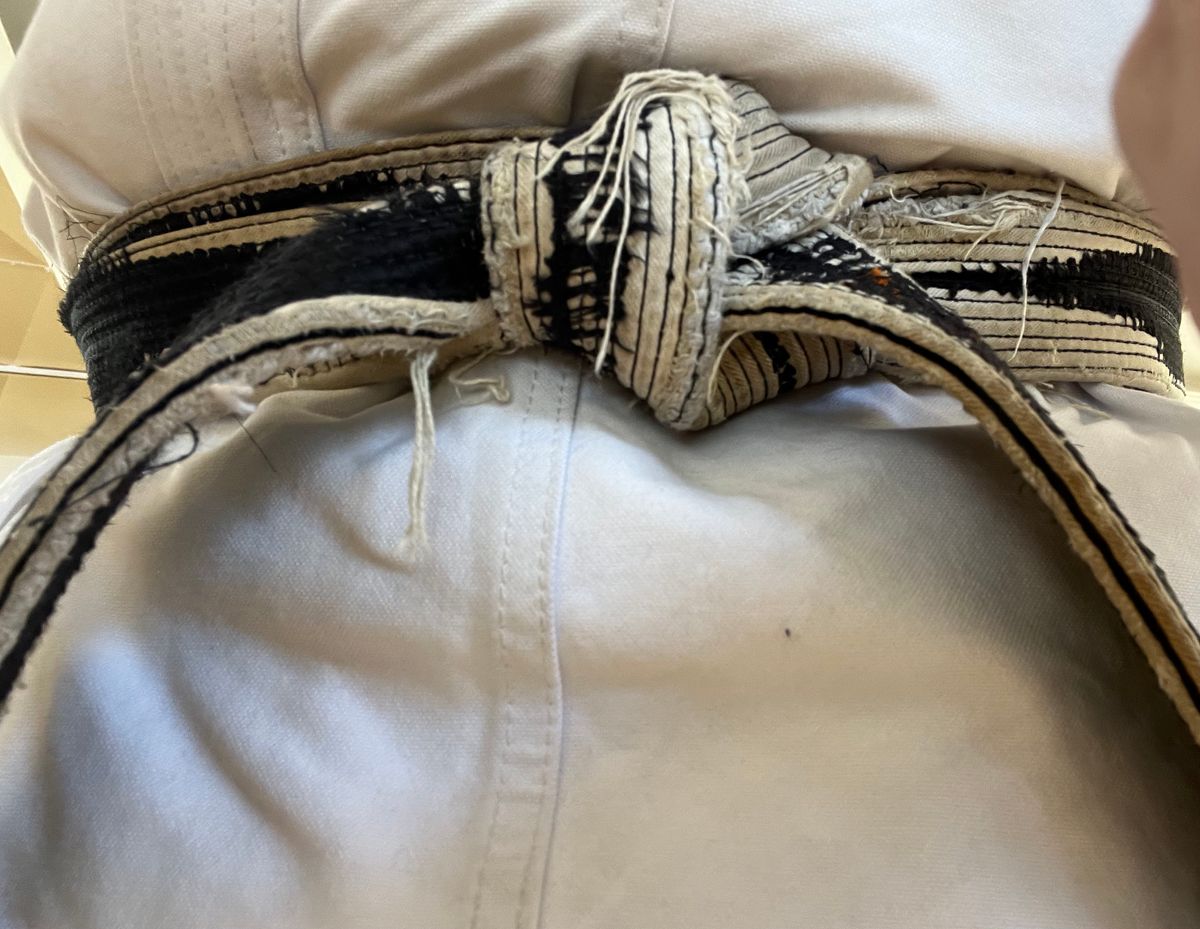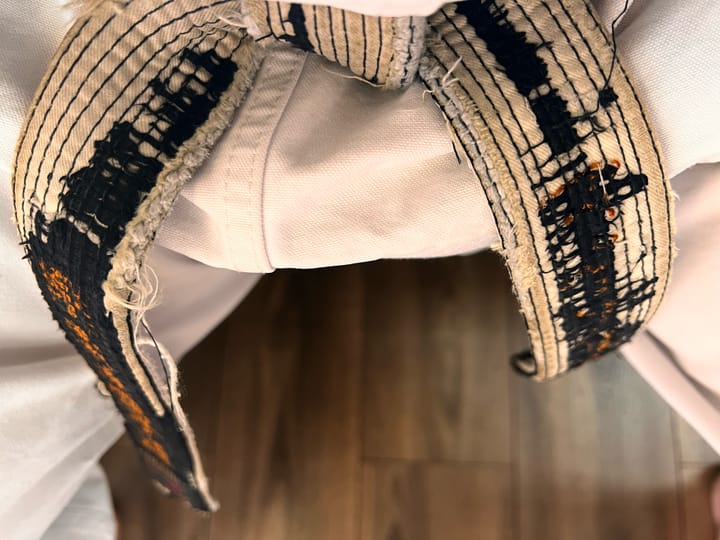Becoming a dan-ranking blackbelt karateka is the goal of a lifetime.
Across the globe, there are likely less than ten thousand living blackbelts across all styles of karatedō.
To be one of ten thousand anything is certainly an amazing feat: to be one of ten thousand karateka on the planet to achieve this level is beyond amazing – it is an admirable goal of a lifetime.
The path to that rank – the path to blackbelt – is a long and arduous one, and it should be: otherwise it would hardly be worth striving on this path to reach this goal. Great things require great effort.
How Many Blackbelts Are There, Anyway?
The actual number is difficult to determine for several reasons, most importantly because every major certification organization guards its membership rolls rather closely.
The number of Goju Ryu (read more about the meaning of the term here), Shotokan, and Kyokushinkai blackbelts is each about equal, at around three thousand across all affiliated organizations, with the balance held among smaller ones.
There are some caveats though, to keep in mind. First, note of course that the world is replete with many claims of dan-level students who are not rigorously certified; that number is neither countable nor meaningful. We're not considering those in our estimate.
Next, consider that when we say "Goju Ryu" blacbelts we're counting all direct and affiliated styles of Goju Ryu. That would be the same for Shotokan and Kyokushinkai blackbelts, since there are a number of "certification" bodies and quite a few affiliates, break-away, and succesor groups that certify blackbelts.
And lastly, our estimate is really an unreliable one. The best we can do is count blackbelts from organizations that publicly list them, and then factor in multiples of that number for organizations that don't list blackbelts. And then we can enhance that number with blackbelts we see and can count at tournaments, seminars, and other karatedō events.
So again, take this estimate of around ten thousand with a substantial grain of salt – but its the best we have. And does it really matter if there are 8,000 or 12,000?
Not really.
No matter what, blackbelt karateka are a very exclusive group.
Where Are They, Anyway?
The geographic distribution of blackbelts varies by dojo and by style of karatedo, as well as by certification body.
Mostly this has to do with the historical development of the dojo who spread out from Japan. As an example, IMGKA (one of three Goju Ryu organizations of active dojo) has only about fifteen blackbelts in the United States (of which five, as of this writing, are at our dojo) as compared to around a hundred and twenty in Canada – solely a result of the initial seeding of senior blackbelts in Canadian cities versus American cities.
If you examine the geographic distribution of other styles of karatedō, you'll see similar patterns as well. Of course, as time marches on and we come further and further away from the initial distribution of blackbelts outside Japan, this pattern of distrubtion starts to more closely match general population centers and their distribution (more in big cities, etc.)
Why Train to Become a Blackbelt?
Given that the path to becoming a blackbelt is so arduous, why do it?
Because it is so arduous, of course.
To accomplish great things and to achieve goals of substance, one must struggle. Otherwise, there is little satisfaction in accomplishing these goals. We grow by being challenged, and we develop skills and knoweldge through struggle and challenge.
But this doesn't explain all of the reasons to strive to become a blackbelt.
The unique aspect of training to become a blackbelt is that it combines the three central core aspects of who you are as a person. You will train your body, your mind, and your spirit. There is no other similar experience that combines all of these aspects, and in the combination of these three aspects of you as a person, you will grow.
The Path
The testing process for dan-level karateka is somewhat similar regardless of whether a karateka is testing for shodan (from 1st Kyu Advanced Brownbelt) or for a higher rank (nidan, sandan, etc.). (For more about how ranks work in martial arts, click here.)
Blackbelt testing is arduous and consumes a great deal of time and dojo resources, so it only occurs once a year. Summer is traditional in most dojo, although this can vary, and typicaly blackbelt testing runs about three to four months.
The amount of training time required to test also varies, and really is based on the progress of the individual. For shodan (first dan), the process is several years in the making. To move from shodan to nidan, for instance, might be as short as two years, but is likely to be longer.
Blackbelt testing generally has four major testing events that focus on specific areas. They are:
- The Written Examination
- Kihon (basics)
- Kata
- "Fighting Spirit" (toh-kon 闘魂)
Each of these areas tests key parts of the knowledge and skills necessary to be a blackbelt. Successful candidates are awarded a dan rank at the end of the fourth test. The award occurs immediately at that event, unlike kyu-level testing where results are announced a week later.
However, the process starts even sooner than this.
Selection
Karateka are invited to test, just like kyu-level students (in most dojo) are invited to test. However, the process of Blackbelt Selection usually occurs about two months before the first part of test ("The Written Examination").
The decision is ultimately made by Sensei, or whomever is the chief instructor of the dojo. During the few months leading up to Golden Week (the first week in May), careful observation is made of potential 1st Kyu Advanced Brownbelts.
While much goes into the process, the basic question is this: is the karateka effectively already at a blackbelt level? Do they demonstrate all of the technical skills and knowledge necessary for a blackbelt? Are they emotionally mature, and intellectually prepared? Are they phyically able to test?
All of this goes into the formal invitation, which is issued in writing, and handed directly to the candidate after Golden Week.
Typically a week or two is allowed for potential candidates to accept their invitation. Once that happens, the real process of Selection begins.
Shoshin
The first formal part of testing occurs weeks before the first actual test. This is the traditional meeting with Sensei, and the putting-on of each of the karateka candidates' white belts.
This switching of belts is a basic and famous example of "beginner's mind" or shoshin (read more here). All karateka testing for any dan rank (shodan, nidan, etc.) are deeply encouraged to explore their basics – basic techniques as well as core concepts.
It's quite a change for many students: imagine being among the most senior of students at the dojo, and lining up nearest the shinzen, and then... you're now at the other end of the line, lining up with white belts.
It's actually quite an exhilarating opportunity to connect with the basic reasons that you've trained in karatedō for so long, and a wonderful chance to connect with te most junior karateka at the dojo – who are the very same students that you'll be leading, as blackbelts.
The Beginning of the Journey
When a karateka progresses through Blackbelt Selection, taking each of the three tests that leads to the final one, he or she begins to understand that the process of Selection, and testing, is truly the beginning of the journey.
Achieving dan ranking is, certainly, a massive achievement. But this is an achievement that really is a beginning, not an ending.
Of course, the material – the kata, training with weapons which begins at blackbelt level, and more sophisticated concepts – increases in difficulty and complexity. And that, in and of itself, is important because we must continue to challenge ourselves in our training.
But there is much more to being a blackbelt.
Blackbelts are responsible for teaching, for leading, and for helping to build the future of the dojo. No dojo can exist without a healthy blackbelt community that continues to grow and evolve.
Blackbelts are the lifeblood of a dojo, And becoming one brings significant responsibility. No blackbelt could exist without others, in the past, building and maintaining a dojo community. And as blackbelts, we have the obligation and responsibility to continue that effort and to contribute to it in meaningful ways.
In the end, the path to blackbelt isn't a path that has an ending. It's a lifelong journey, with amazing adventures and temporary destinations sprinkled over the length of it.
There is no path to blackbelt; but there is a path that blackbelts travel, to great satisfaction and achievement.





